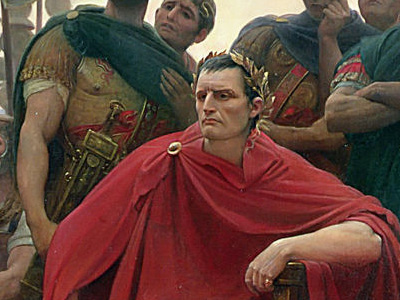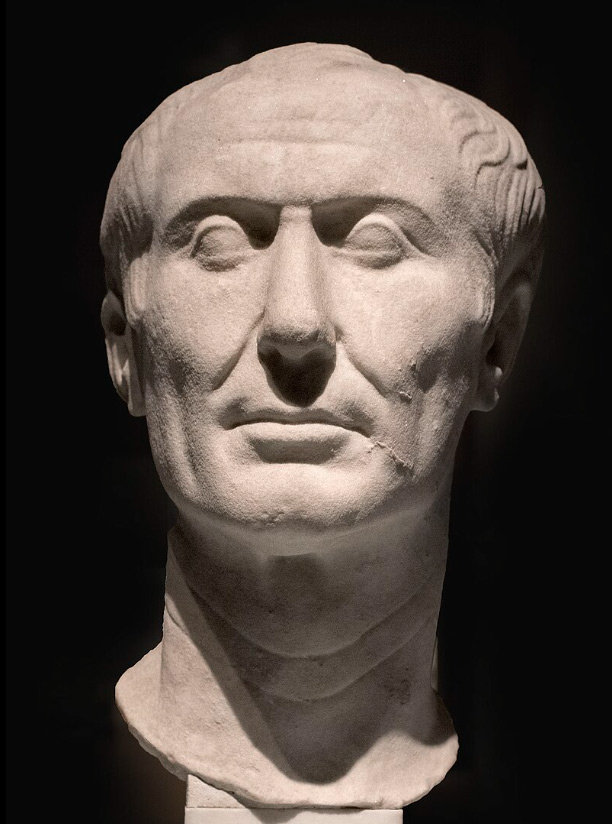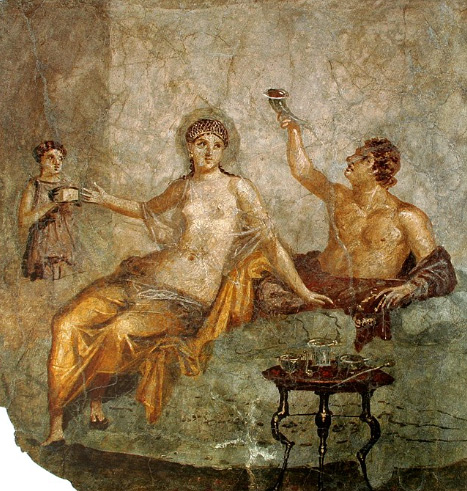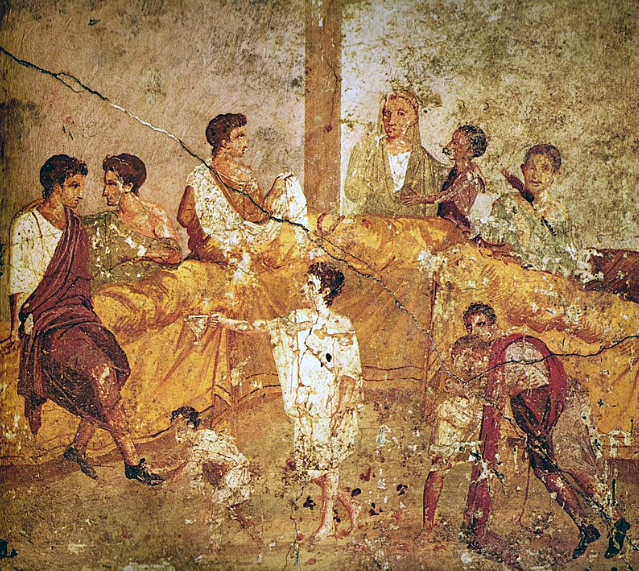Julius Caesar (100-44 BC)

Conquest of Gaul
Caesar was still deeply in debt, but there was money to be made as a governor, whether by extortion or by military adventurism. Caesar had four legions under his command, two of his provinces bordered on unconquered territory, and parts of Gaul were known to be unstable. Some of Rome's Gallic allies had been defeated by their rivals at the Battle of Magetobriga, with the help of a contingent of Germanic tribes. The Romans feared these tribes were preparing to migrate south, closer to Italy, and that they had warlike intent. Caesar raised two new legions and defeated these tribes.
In response to Caesar's earlier activities, the tribes in the north-east began to arm themselves. Caesar treated this as an aggressive move and, after an inconclusive engagement against the united tribes, he conquered the tribes piecemeal. Meanwhile, one of his legions began the conquest of the tribes in the far north, directly opposite Britain. During the spring of 56 BC, the Triumvirs held a conference, as Rome was in turmoil and Caesar's political alliance was coming undone. The Lucca Conference renewed the First Triumvirate and extended Caesar's governorship for another five years. The conquest of the north was soon completed, while a few pockets of resistance remained. Caesar now had a secure base from which to launch an invasion of Britain.
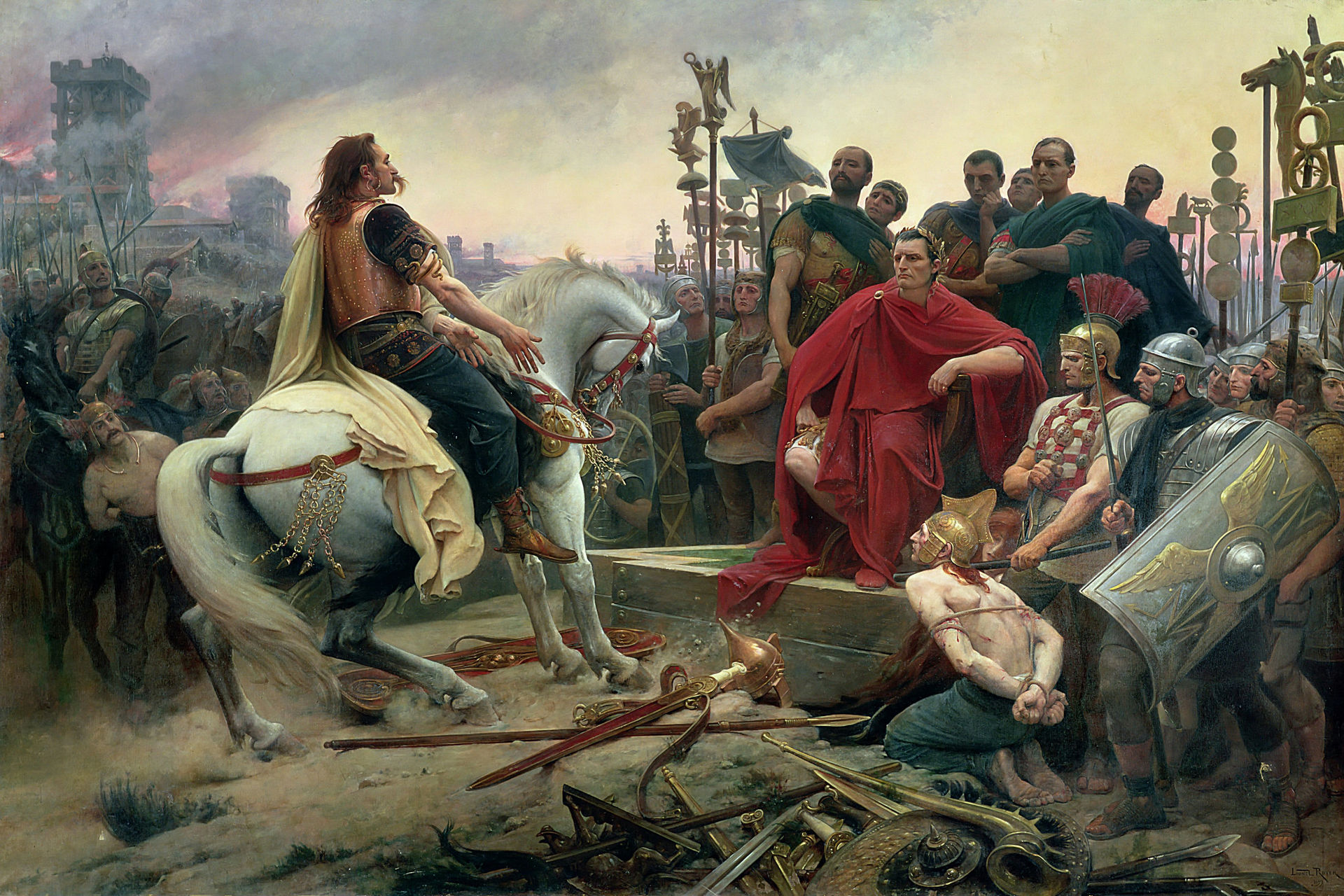
The painting depicts the surrender of the Gallic chieftain after the Battle of Alesia (52 BC). Note that one of the warriors (bottom left) has a torque around his neck. In fact, the torque was reserved only for gods and important members of a royal family. The depiction of Gauls with long hair and mustaches is also called into question today. The horse is a Percheron, although at this time this breed was not in Gaul. In addition, the Gauls rode bareback, but here the horse is saddled and harnessed. The rectangular shield also does not accord with the time when they were mostly oval.

The painting depicts the surrender of the Gallic chieftain after the Battle of Alesia (52 BC). Note that one of the warriors (bottom left) has a torque around his neck. In fact, the torque was reserved only for gods and important members of a royal family. The depiction of Gauls with long hair and mustaches is also called into question today. The horse is a Percheron, although at this time this breed was not in Gaul. In addition, the Gauls rode bareback, but here the horse is saddled and harnessed. The rectangular shield also does not accord with the time when they were mostly oval.
( Click image to enlarge)
In 55 BC, Caesar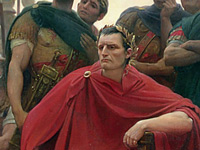 Julius Caesar (100-44 BC), was a Roman politician and general who played a critical role in the events that led to the demise of the Roman Republic and the rise of the Roman Empire. Caesar is considered by many historians to be one of the greatest military commanders in history. Julius Caesar » repelled an incursion into Gaul by two Germanic tribes, and followed it up by building a bridge across the Rhine and making a show of force in Germanic territory, before returning and dismantling the bridge. Late that summer, having subdued two other tribes, he crossed into Britain, claiming that the Britons had aided one of his enemies the previous year, possibly the Veneti of Brittany. His intelligence information was poor, and although he gained a beachhead on the coast, he could not advance further, and returned to Gaul for the winter. He returned the following year, better prepared and with a larger force, and achieved more. He advanced inland, and established a few alliances. However, poor harvests led to widespread revolt in Gaul, which forced Caesar to leave Britain for the last time.
Julius Caesar (100-44 BC), was a Roman politician and general who played a critical role in the events that led to the demise of the Roman Republic and the rise of the Roman Empire. Caesar is considered by many historians to be one of the greatest military commanders in history. Julius Caesar » repelled an incursion into Gaul by two Germanic tribes, and followed it up by building a bridge across the Rhine and making a show of force in Germanic territory, before returning and dismantling the bridge. Late that summer, having subdued two other tribes, he crossed into Britain, claiming that the Britons had aided one of his enemies the previous year, possibly the Veneti of Brittany. His intelligence information was poor, and although he gained a beachhead on the coast, he could not advance further, and returned to Gaul for the winter. He returned the following year, better prepared and with a larger force, and achieved more. He advanced inland, and established a few alliances. However, poor harvests led to widespread revolt in Gaul, which forced Caesar to leave Britain for the last time.
While Caesar was in Britain his daughter Julia, Pompey's wife, had died in childbirth. Caesar tried to re-secure Pompey's support by offering him his great-niece in marriage, but Pompey declined. In 53 BC Crassus was killed leading a failed invasion of the east. Rome was on the brink of civil war. Pompey was appointed sole consul as an emergency measure, and married the daughter of a political opponent of Caesar. The Triumvirate was dead.
Though the Gallic tribes were just as strong as the Romans militarily, the internal division among the Gauls guaranteed an easy victory for Caesar. Vercingetorix's attempt in 52 BC to unite them against Roman invasion came too late. He proved an astute commander, defeating Caesar in several engagements, but Caesar's elaborate siege-works at the Battle of Alesia finally forced his surrender. Despite scattered outbreaks of warfare the following year, Gaul was effectively conquered. Plutarch claimed that during the Gallic Wars the army had fought against three million men (of whom one million died, and another million were enslaved), subjugated 300 tribes, and destroyed 800 cities.
HISTORY
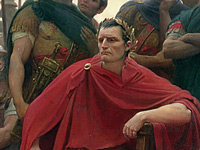
RESOURCES
This article uses material from the Wikipedia article "Julius Caesar", which is released under the Creative Commons Attribution-Share-Alike License 3.0.
© Stories Preschool. All Rights Reserved.
